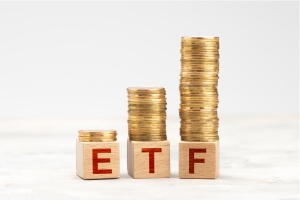
A visit to a chocolate shop can be a mouth watering experience. However, rows and rows of chocolates and not knowing which ones to pick can reduce you to tears. To work around this problem, shops started selling little curated boxes which were filled with different flavours. If you picked up a curated box, you would be able to try all the flavours in the box. Similarly, while the stock market is filled with great companies that can generate substantial returns over time, selecting the best ones can be challenging. To combat this, the Nifty 50 Exchange Traded Funds (ETF) was introduced.
Know your Nifty 50 ETF
The first question to address is ‘what is Nifty 50 ETF?’
A Nifty 50 ETF will hold all the Nifty 50 stocks in the same proportion as the index. As a result, the fund will mirror the movements of the benchmark Nifty. If the Nifty 50 goes up, the fund will go up and if the Nifty 50 goes down, the fund will go down. More importantly, returns generated by the Nifty 50 ETF will be marginally less than the returns generated by the Nifty 50 Index. The slight difference in returns can be attributed to tracking error. This reflects the fund management expenses and transaction costs incurred while rebalancing. Units of the ETF are listed on the stock exchange and can easily be bought and sold like listed stocks. You can invest through the Asset Management Company(AMC) website (this option is available only at the time of the New Fund Offering (NFO)), your existing stock broker or open a demat account with a broker and begin investing.
Multiple sources of value creation
The next question is why you should be investing in a Nifty 50 ETF.
The Nifty 50 ETF can prove to be a great investment option for both new to market investors as well as seasoned investors. If you are a new to market investor, then you can easily participate in the equity market by investing in the benchmark index. On the other hand, if you are a seasoned investor, then exposure to the Nifty 50 ETF can provide the benefit of diversification. There are also several other benefits of investing in Nifty ETFs. Some of these include:
ETFs are liquid like stocks and diversified like mutual funds: ETFs are listed and traded on exchanges like stocks. As a result, they can be bought and sold at any time during trading hours at real time prices instead of end-of-day prices. Further, since the ETF invests in all the stocks of the underlying index, you automatically get the benefits of diversification.
You don’t need to worry about stock selection: When you are looking to create a robust investment portfolio, one of the biggest challenges that you are likely to encounter is ‘stock selection’. To pick the right stock, you need to invest your time and energy in doing research, following market trends, and understanding valuations. The benchmark Nifty comprises stocks of leading companies in the country. Since the Nifty 50 ETF simply replicates the composition of the underlying Nifty 50 index, you get exposure to the top companies through a single investment, without having to worry about the right or wrong stock selection.
You don’t need to worry about managing the portfolio: The primary aim of the Nifty 50 ETF is to replicate the underlying index. This means that if the weight of a certain stock reduces or increases in the index then the ETF will automatically rebalance to reflect that change. Similarly, it will change composition if a stock is added or removed from the Nifty 50 index. This means that once the stocks are bought in the appropriate proportion, the fund does not need to be actively managed and rebalancing happens only when required. Thus, you do not need to worry about managing the portfolio.
It is low-cost in nature: Since ETFs are not actively managed, the transaction costs and fund management fees are relatively lower. In addition to the demat charges, you will have to pay brokerage to the stock broker at the time of purchase and sale. Overall, the costs associated with ETFS are fairly low.
In order to make the right investment decisions, it is important to be aware of investment risks along with the benefits. When it comes to investing in ETFs, you must recognise that currently there are several options from which you can choose. Each option will have a different risk profile depending upon the underlying index or basket of stocks that it is tracking. Further, ETFs can also be exposed to counterparty risk and foreign currency risk depending on their underlying holdings.
It seldom happens that through a single purchase, you can actually reap multiple benefits. However, that is exactly what the Nifty 50 ETF gives you as an investor, i.e., multiple benefits through a single investment.
An investor education initiative by Edelweiss Mutual Fund
All Mutual Fund Investors have to go through a onetime KYC process. Investor should deal only with Registered Mutual Fund (RMF). For more info on KYC, RMF and procedure to lodge/redress any complaints, visit -https://www.edelweissmf.com/kyc-norms
MUTUAL FUND INVESTMENTS ARE SUBJECT TO MARKET RISKS, READ ALL SCHEME RELATED DOCUMENTS CAREFULLY
Trending Articles
MUTUAL FUND INVESTMENTS ARE SUBJECT TO MARKET RISKS, READ ALL SCHEME RELATED DOCUMENTS CAREFULLY.





















